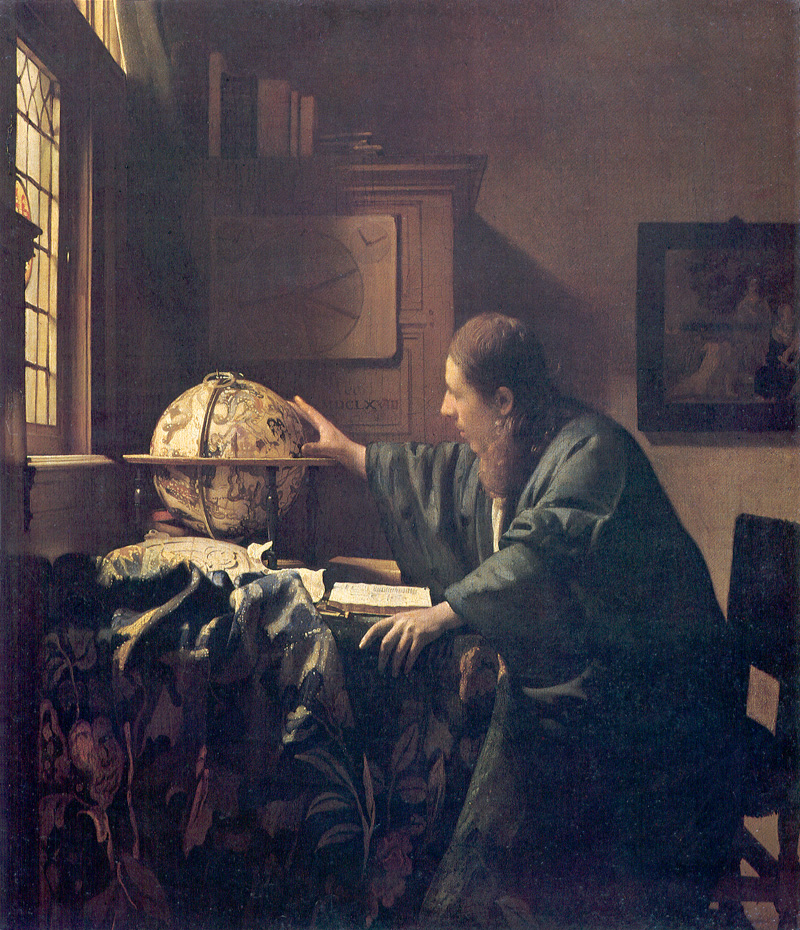Today is the anniversary of the birth of Galileo Galilei so this week’s painting is The Astronomer, by Johannes Vermeer. A lightly idealised depiction of a seventeenth-century scientist, rapt in his study of the heavens, the work was painted late in Vermeer’s life, probably some time towards the end of the 1660s. It can be seen in the Louvre, in Paris.
This painting is unusual, in Vermeer’s oeuvre, in having a male protagonist. So many of his other pictures show women or girls in interiors that the artist may be said to resemble the Dutch genre painter satirised in Gerald de Lairesse’s Schilderboek who “trapped by his desire clings to damsels, painting nothing else all his life.” The picture reproduced here relates closely to another uncharacteristic work by Vermeer on the similar theme of The Geographer, which suggests that they were intended to constitute a pair.
The same model appears in both paintings, so it is possible that the individual in question commissioned both works as semi-allegorical portraits designed to illustrate the breadth of his learning. The most frequently proposed candidate is the cloth merchant and amateur scientist Antony van Leeuwenhoek, who would have been about the same age as the man shown in the picture reproduced here, and whose only surviving likeness – preserved in a contemporary engraving – shows a face not wildly dissimilar to that of the astronomer. Van Leeuwenhoek was Vermeer’s exact contemporary and lived in the same city, Delft. Speculation that they may have known each other is strengthened by the fact that van Leeuwenhoek played a part in sorting out Vermeer’s tangled financial affairs after the painter’s death. Both men shared an interest in optics, and in looking at the world through lenses. Vermeer’s highly original method, of representing appearances purely in...


